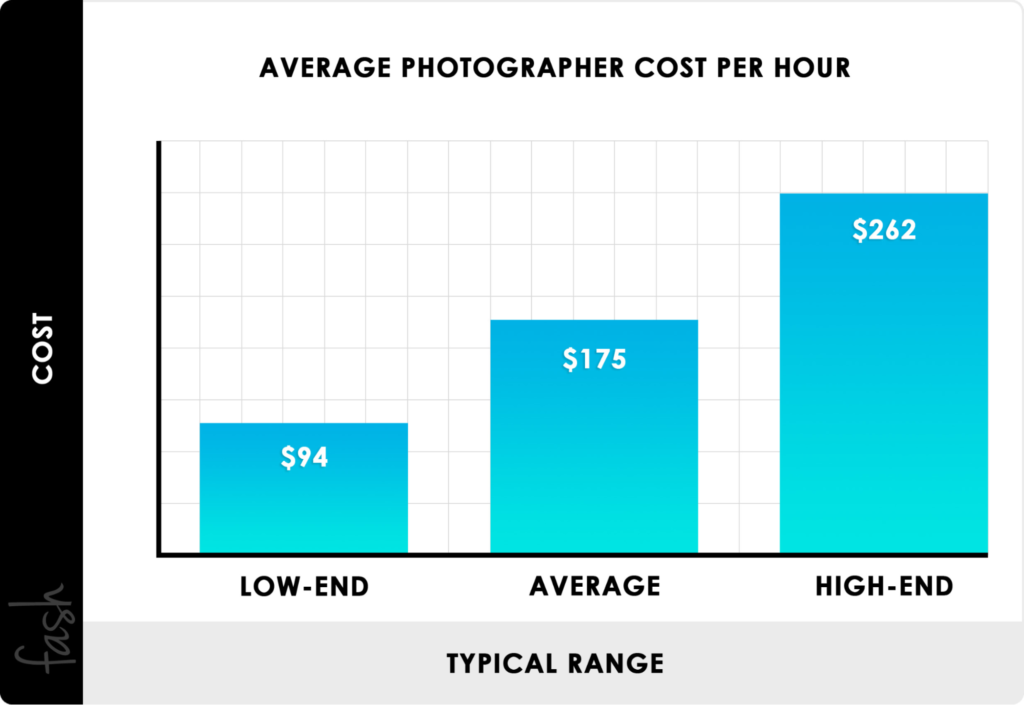Having fantastic photography skills doesn’t automatically mean you’ll have a successful photography business. There’s more to it than pointing and shooting.
Here you’ll learn everything that’s involved in starting a photography business. Plus, we’ll help you lay the foundations of a highly profitable business doing something you’ve always dreamed of.
Why Starting a Photography Business Is Worth It
If you want to exercise your creativity and turn your passion for photos into a career, then you should start a photography business. It may be time for you to leave the rat race and start getting paid for doing something that you love and that you’re good at.
This is the kind of business you can run from anywhere, including your own home. Or you may wish to take your photography business on the road and seek out contracts that allow you to do some traveling.
The truth is, there are more overhead costs involved in starting a photography business than some other businesses. However, you’ll likely be able to recoup your investment quickly as there is great demand for photographers.
The photography market in the US is worth approximately $11 billion. There’s a wide potential customer base out there for you in both the B2B and B2C spheres.
The Investment Needed to Start a Photography Business
High-end photography equipment is expensive. But if you don’t have the funds to buy expensive gear right off the bat, you can start with basic equipment and upgrade your gear as your business grows.
But even when you start small you can expect to invest up to $10,000.
You must first take into account the cost of equipment – cameras, lenses, flashes, and studio lighting equipment. There’s other hardware you’ll need, such as a laptop with sufficient storage, memory cards, and external drives.
There are also business expenses to consider, such as licenses and permits, insurance, and accounting costs. You’ll also need to purchase photo editing software, e.g. Photoshop, and set up a website where you can display your portfolio and market your services.
The good thing is, there are DIY website builders nowadays that are affordable and easy to use. We recommend Wix as it offers pre-made templates from which you can build a classy photography website using its drag-and-drop editor.

There are several useful features for photography businesses, such as the ability to create high-res portfolios and forms for online bookings. Plus, their security features (including 24/7 monitoring and PCI DSS-compliant payment gateways) and eminently reliable infrastructure are baked into every plan, which is a huge boon for any business website.
Wix has a free plan and its business plans start at $18 per month.
Depending on the niche you choose, there may also be further costs to take into account. For example, you may need to rent studio space.
There are also fees associated with registering your business. These vary depending on the state in which you form the business and the type of business you choose to create, e.g. a sole proprietorship, single-member LLC, or LLC.
You may also decide to invest in continued learning to boost both your business and photography skills.
Then there’s the cost associated with branding and marketing your photography business. But the expense here depends on how much you decide to do yourself or whether you decide to outsource this kind of thing.
7 Steps to Start a Photography Business
Follow these steps to set up a photography business that’s bound for success:
#1 – Choose a Niche
Choosing a particular area of photography is a smart business move. There’s less competition when you niche down as opposed to being an all-rounder trying to reach every potential customer.
It’ll help you hone in on a target market. Plus, you can become the go-to expert in a particular niche. All of these things, of course, will help you to get more clients.
Choose a niche that matches your skillset, builds on your experience, and one that you’ll enjoy. Also, consider if there’s a big enough market for the niche in the area you’ll work in and potential profits. The best niche is in the sweet spot where these aspects overlap.
There are a number of photography specialties, such as:
- Weddings
- Events
- Food
- Fashion
- Portraits
- Travel & tourism
- Sports
#2 – Create a Business Plan
A business plan is a pivotal step on your journey to success.
You’ll outline what you hope to achieve and how exactly you’ll achieve those goals. As you progress, you can use it as a guide for any business decisions you make and to ensure you’re reaching those all-important milestones.
Furthermore, a business plan is a necessary formality in many cases. For instance, you’ll need a business plan if you hope to seek partners for your business or get funding.
Here’s what you should include in your business plan:
- Executive Summary – A brief overview of your business that may include your mission statement, information about your company structure and location, as well as any high-level growth plans.
- Company Description – A more detailed examination of your business and its customer base. Include the value your company provides and the problems you solve, plus any competitive advantages you may have.
- Market Analysis – Display research about your competitors and your target market. Include any trends you can see, how competitors achieve success in this industry, and what you can do better or differently.
- Service Details – Describe in detail the photography services you plan to offer, and how your service will work. This should include the practicalities involved, such as the equipment and facilities you’ll use.
- Marketing Plan – Outline your strategies for acquiring customers. This includes how you’ll promote your services, close deals, and gain referrals or repeat customers.
- Financial Plan – Include your financial projections along with budgets and expenditures. Be as precise as you can be.
#3 – Build a Portfolio
A portfolio is the most important marketing material you have at your disposal as a photographer.
It’s real proof that your work is great. Potential customers don’t have to rely on reviews when choosing a photographer, they can see what the end product will look like through your portfolio.
The great thing about images is that they evoke emotions. You want the potential customer to look at your work, feel something, and choose you as their photographer.
How do you build a portfolio when you’re first starting out? The truth is you may have to take on a couple of free gigs to build up your library.
Naturally, your portfolio should reflect the niche you intend to work in. For some niches, it will be simple to gather portfolio pieces. For example, if you intend to work in the wedding industry, ask a friend or family member if you can photograph their nuptials. If you want to work in the travel and tourism industry, just get out there and take snaps.
For other industries, such as journalism, fashion, or sports, you may have to do a little extra work to get your foot in the door.
It’s a good idea to network with other photographers, say from LinkedIn or former classmates, etc. You could ask connections if there are any opportunities to be a second photographer for the purposes of building your portfolio.
#4 – Price Your Services
It can be difficult when you’re starting out to figure out what you should charge clients. But even though you may love what you’re doing, you have to remember that it’s still a business.
As we’ve spoken about there’s a reasonable amount of overhead involved in starting a photography business, plus ongoing expenses. Therefore, you can’t afford to sell yourself short.
You need to make a profit. This is especially true if you plan to re-invest and grow your business.
So, what should you charge clients for your photography services? Though it varies by niche, customers pay photographers $175 per hour on average.

Bear in mind that you may not actually charge by the hour. For example, you may create package deals for family portraits or have a set rate for events, etc.
When determining your prices, you should certainly factor in all of your business expenses, plus any travel or preparation costs. You must also remember that for every hour you spend on-site taking photographs, there will be several more hours to account for editing the work.
It isn’t clear-cut how you should price your services as there are many variables. Just be sure not to undersell yourself. You may even wish to look at what those offering similar services charge to help you with pricing.
#5 – Set Up a Website
A website is crucial if you want people to find your photography business through online searches. It’s the place where you will house your portfolio along with key information about your services, and your contact information.
Furthermore, you’ll be able to use your website to express what your brand is all about. And, of course, to attract customers, perhaps through advertising special offers, using sign-up forms to gather an email list, and further sales and marketing strategies.
As mentioned above, you can use a service like Wix to set up your own business website. Using Wix, you can add a digital portfolio to your site easily. There’s the option to add watermarks to your work so that visitors can download and share your work, thus extending your reach.

Wix also has the tools for you to add forms for online booking which is super convenient for customers and pretty much expected nowadays. There are also tools that you can use to capture leads and chat live with potential customers.
You’re essentially creating an online storefront for your business.
#6 – Take Care of the Formalities
There are a number of steps every new entrepreneur must take to establish a legitimate and legal business. It’s not necessarily the fun part of starting a new business as there may be a lot of paperwork and various fees involved.
However, these things are necessary, if you want to protect your brand and your finances. Plus, every state has rules and regulations surrounding forming a business which you must adhere to so you don’t encounter legal problems in the future.
The first thing you’ll need to do is decide on the business structure. You may form a sole proprietorship in which you are in sole control of the business operations. You’ll do your own bookkeeping, records, and taxes.
Another option is to form a single-member LLC, regular LLC, or partnership. These are more complex to set up but offer greater legal protections. For instance, the business is liable for any debts it incurs and not you personally.
Once you’ve decided on the type of business you wish to form, check with your local state department to find out what steps you need to take next. Sole proprietors do not need to register a business with the state. While other organizational structures must register the business, and complete a number of further forms and legal documents to get established.
#7 – Attract Customers
Once you have the foundations of your business set, you can start to implement your marketing and sales strategies.
There isn’t really a one size fits all strategy here. That’s because your marketing and sales efforts should be unique to your target market.
For instance, you’d market yourself differently to b2b customers than b2c customers. B2b customers tend to make decisions based on the return they’ll get on their investment, for example, while b2c customers tend to make purchase decisions based on emotions.
There will be further differences between niches within those markets. So do your research to learn how you can appeal to your audience and solve your target market’s problems.
Next Steps
There may be some aspects of starting a business that you wish to explore further before you take the leap. If you found this post useful, you may also want to check out our step-by-step guide to market research.
Moreover, if you’re keen to learn more about financial planning, take a look at our comprehensive guide to startup costs. You’ll learn how to create a budget the smart way and discover strategies for long-term financial success.















